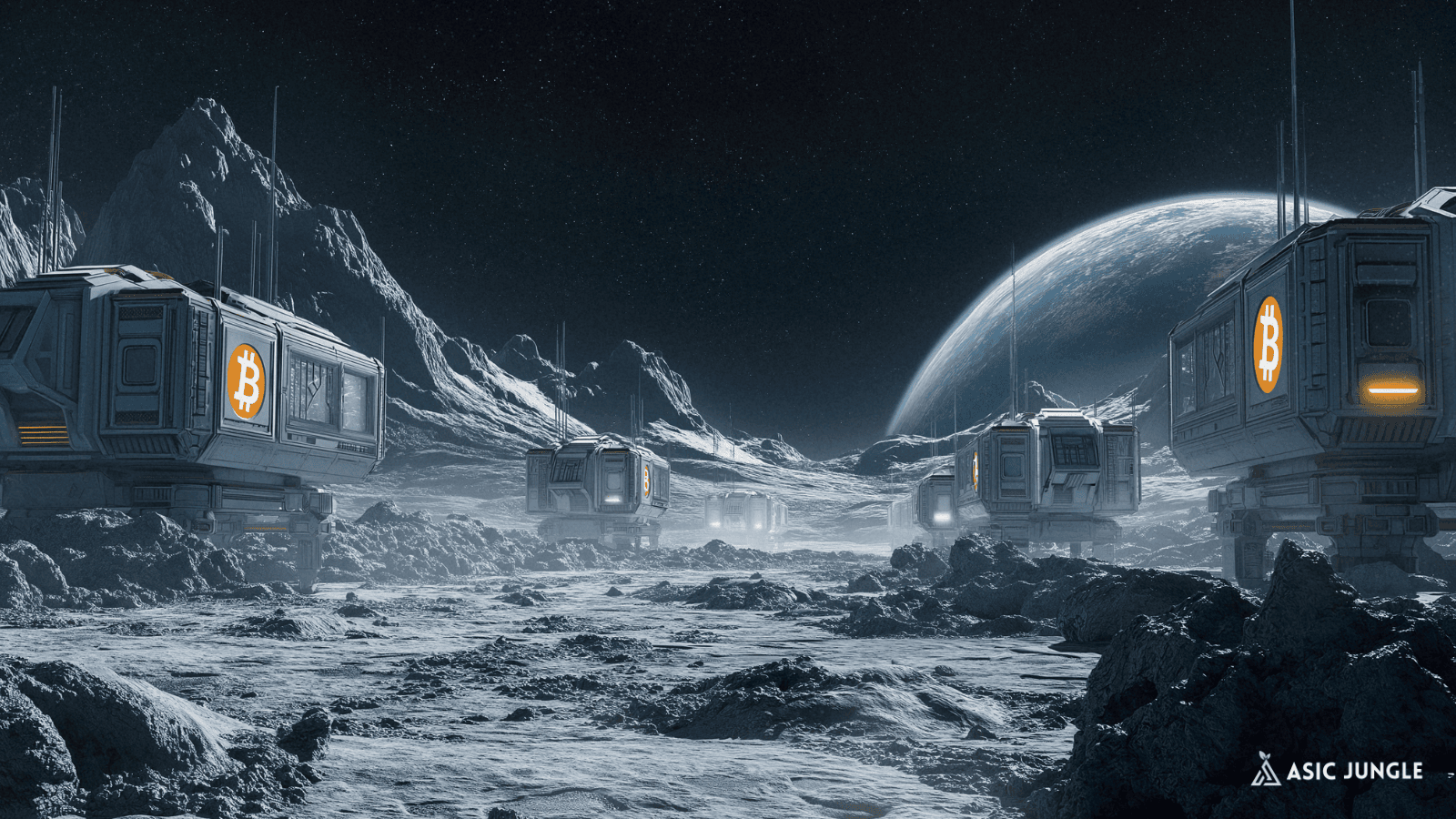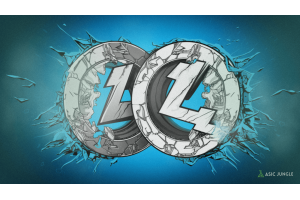What if the next block wasn’t mined in the U.S, China or Kazakhstan but 384,400 km away? In other words, on the moon.
Bitcoin mining has taken some unorthodox forms over the years. We’ve seen operations in underground spas, remote hydropower dams, and inside nuclear-adjacent data centers - all in the race to find the next block.
Although this idea is merely hypothetical, the moon surprisingly has a couple of advantages when it comes to a quality setup. It’s polar zones experience continuous sunlight for extended periods of time, while also experiencing freezing temperatures due to the low angle at which sunlight reaches the surface. This, paired with the absence of neighbors with noise or zoning complaints, creates a perfect environment. As humanity’s interest in building lunar data centers grows, this concept is slowly shifting from absurd to increasingly plausible.
Power Without Nights
The lunar south pole experiences almost continuous sunlight, up to 85 to 90 percent of the year, which is more than many places on Earth that are considered sunny year-round. This would essentially provide solar power that barely ever turns off. To draw a comparison, Texas solar farms face cloudy days and regular nightfall, whereas lunar peaks are in near-continuous daylight. This makes them some of the most promising locations for future off-world power generation.
Built-In Cooling
If the continuous sunlight creating never-ending power wasn’t enough, the moon's environment is accompanied by its own natural cooling system. No need for an abundance of fans, the Moon’s polar region is an airless vacuum environment that keeps cool naturally and efficiently. It is also cold enough to reach about –170 °C during longer lunar nights. Without an atmosphere to trap heat, excess warmth generated by machines and other equipment cools off and radiates into space. This would be a significant advantage for miners and data centers, as the energy spent on cooling systems can be greatly reduced, and operational energy can be maximized. The Moon’s near-constant sunlight adds to the advantage of cooling and creates the availability of abundant energy, which is a great systemic feature of the Moon.
The Delay Problem
When it comes to finding a block, every second counts. The quicker a miner can broadcast it to the network, the better. A miner that broadcasts its block just two seconds later than a competitor could lose the entire block reward, even if it technically found it first. This would be a major economic disadvantage.
Mining on the Moon does face challenges when it comes to speed, given that it is about 384,000 km away from the rest of the network. However, this doesn’t make lunar mining impossible. To overcome these issues, there are two potential methods that could be used.
- Satellite relay networks: One could position satellites at points between Earth and the Moon to speed up signal transmission.
- Joining Earth-based mining pools: Instead of solo mining from the Moon, contributing hashrate to a pool can be another loophole. The pool server handles broadcasting, so latency matters less.
Dust, Radiation & Durability
Although the moon and space sound like a calm atmosphere to set up a mining farm, it can actually be quite harsh for the machines. The surface of the moon is coated with extremely fine dust that is composed of tiny glass-like particles. Naturally, this would interfere with the machine's fans, since this dust is known to cling to surfaces and, over time, grind down equipment.
Additionally, there’s no atmosphere or magnetic field to block cosmic radiation, so hardware lifespans can be cut short, and error-free performance is not guaranteed. Although various challenges arise, they are not dealbreakers. Space engineers have already developed potential hardware strategies to withstand dust, radiation, and extreme temperatures, and the same strategies could be applied to protect mining equipment on the moon.
The Legal Grey Zone
The laws for lunar activities are far from straightforward and widely untested. The 1967 Outer Space Treaty makes it evidently clear that no country owns the Moon; therefore, there is no one in charge to issue permits, collect taxes, or enforce any zoning. In a more recent agreement, the Artemis Accords discuss how various companies could potentially operate in space, and the use of space resources can support safe and sustainable activities. However, the laws remain quite vague and far from what we are used to.
Future or Fantasy?
Although mining on the moon may sound like a hypothetical experiment, it is not entirely impossible. The pieces needed to make this possible are starting to come together. Plans for lunar data centers are already in motion, and if there’s one thing history shows, it’s that Bitcoin miners don’t wait around for perfect conditions. They’ll go wherever there’s an edge to be found. Cheap, near-constant energy and a legal grey zone have sparked mining booms before, and the Moon checks these boxes. Sooner or later, what sounds theoretical today might turn into reality before we know it. The first Bitcoin block mined beyond Earth won’t just be a technical achievement; it will stand as a defining moment in human history.






